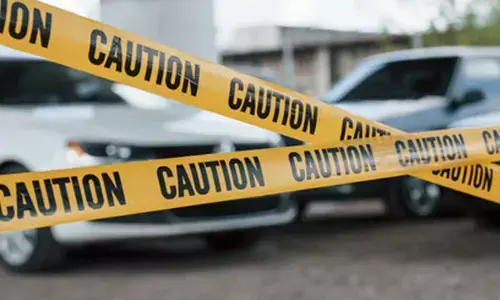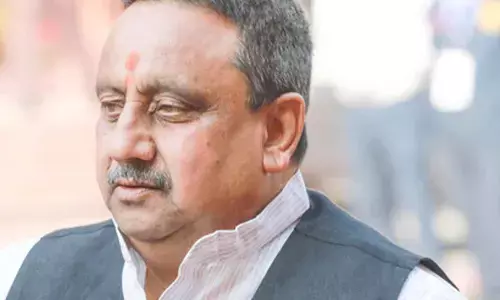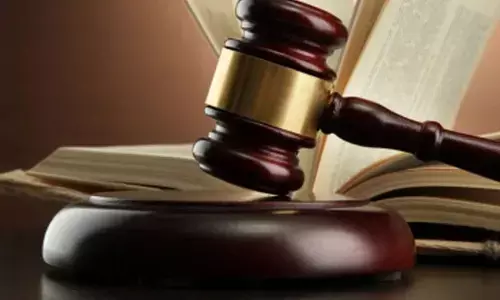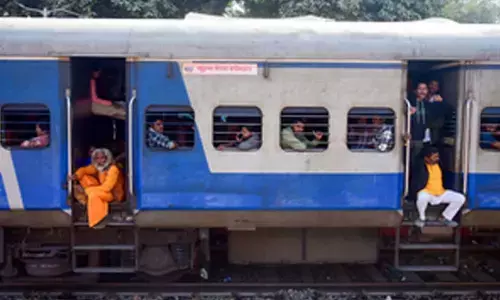Maligning the media is not ‘Samabhav’

The I.N.D.I.A has released a list of 14 names of television news anchors whose shows will be boycotted by the alliance’s media representatives. The charge is “You make headlines against our leaders, make memes, twist their speeches, spread fake news but we are ready to fight against that. If you spread hatred in the society which takes the form of violence, we don’t want to be a part of that,” they said. Fine, if you don’t like what they say, if you cannot defend your party, then don’t participate, but what right does this group have to call those who oppose them as anti-democratic? Criticism is part of journalism. Only a few days back, Congress party said they believe in ‘Samabhav’. Is branding few as anti-democratic Samabhav? Is this the Mohabbat ki Dukan they are showcasing? The I.N.D.I.A needs to answer
The Opposition bloc I.N.D.I.A (Indian National Developmental Inclusive Alliance), a bloc of some political parties, sometimes 26, sometimes 28 in number, whose ideologies and perceptions cannot be called as like-minded, has started their work on a wrong narrative, wrong mindset. When the basic premise is wrong, the solutions, too, would be wrong.
The unlike-minded parties which have come together, adopting the slogan of Congress party’s ‘Bharat Jodo,’ have proved that they are not willing to give up the legacy the country has inherited from the British – divide and rule. The very first decision of the coordination committee that met on Thursday started by telling the media what Journalism is. Their understanding of Journalism unfortunately is that who support the party in power are democratic and those who do not are anti-democratic. Is the Mohabat ka Bazar they are talking about? Apparently, for them anyone who opposes them would be anti-democratic, not just media. How does one look at this? Is it a warning that look if we come to power you better keep your mouth shut, lest you would be branded as anti-democratic?
On one hand they are criticising the NDA government led by Prime Minister Narendra Modi of polarizing the media and that some of the journalists are spreading hate and, on the other, they are using words like “those support the ruling party are anti-democratic.” Is this the inclusiveness the alliance is promising to give if it comes to power?
If any party does not like a newspaper or a news channel, well, it is their choice whether or not to participate in the daily debates or give interviews to newspapers whom they do not like. But no political party has the right to call any media print or electronic as anti-democratic without any basis. First, they need to look within and see if they are democratic or not.
We have seen how in the last one decade, the political parties across the country, irrespective of which party is in power, select the media as soft targets and act in a manner where they want every journalist to turn into a porter or face discrimination. The irony is the governments can be selective in dissemination of news, giving advertisements to select media houses despite having well-laid rules and modalities but they feel that the journalists have no right to be a good communicator.
The I.N.D.I.A has released a list of 14 names of television news anchors whose shows will be boycotted by the alliance’s media representatives. The charge is “You make headlines against our leaders, make memes, twist their speeches, spread fake news but we are ready to fight against that. If you spread hatred in the society which takes the form of violence, we don’t want to be a part of that,” they said. Fine, if you don’t like what they say, if you cannot defend your party, then don’t participate, but what right does this group have to call those who oppose them as anti-democratic? Who are they to teach what is journalism? Another important factor is who is to decide what is hate and what is not? Criticism is part of journalism. Secondly, who is to decide what is hate speech and what is not? Certainly not the politicians.
If the politicians think they will decide what is hate speech or the group of officials who work under them will decide, then that is not democracy. Hopefully, the I.N.D.I.A is not propounding this model of democracy. They further said we have nothing against the anchors whom they decided to boycott but they love Bharat. I tried to hear this statement more than once because it sounded a little weird to me. Till Thursday, it was these very group members who had been saying that the word ‘Bharat’ was unconstitutional. It should be ‘India.’ By changing the name from ‘India’ to ‘Bharat,’ dictatorship is being imposed. The word ‘Bharat’ is not secular.
Then my dear leaders which ‘Bharat’ are you talking about? What kind of maturity are these parties displaying? For a minute, lets us agree that there are certain media houses which are pro-government. Well, if that is their editorial policy and if you do not like them, fine keep away from them. But how can anyone brand them as anti-democratic? This means that the concept of democracy of I.N.D.I.A is submissiveness.
Another point that needs to be pondered over is whether they think that all those who watch the channels which according to them are anti-democratic are hardcore voters of the party in power whom these channels are supporting. A large number of people including freedom fighters in the past used to read Nehru’s ‘National Herald’ newspaper but it does not mean that all were Congress supporters or voters. Similarly, all those who read Patriot a left paper were not their voters. (Incidentally, both are closed now.)
So is the case with those who watch different news channels. The I.N.D.I.A may say “oh we were only referring to those 14 anchors not the viewers.” But do not think the viewers and the voters are fools and have no understanding.
I have a straight question for team I.N.D.I.A. Will the coordination committee take a decision that come what may, whether they win or not, they will not distribute money to voters? Are they ready for it? Are they willing to showcase the real example of democracy and honesty? Targeting a group or branding them as hate mongers is the biggest example of hate politics. Only a few days back, Congress party said they believe in ‘Samabhav’. Is branding few as anti-democratic Samabhav? Is this the Mohabbat ki Dukan they are showcasing? The I.N.D.I.A needs to answer.
The Opposition’s media sub-committee has also decided to form a joint social media strategy to bolster their image and message. Can they assure that their social media wing will strictly follow Gandhian ideology and principles and will see that their social media wing will be 100% neutral and spread the message of love not hatred? If so how? The coordination committee needs to answer.
It should also delve into its past track record and indulge in deep introspection. The media was never so divided till about four decades back. Team I.N.D.I.A… please recall who was in power then? It was the Congress party which adopted the divide and rule policy. The genesis of categorising the media as “friendly media, national media, and other media” began during early 1980s. The improvisation now is party colors are given not only to media houses but also those who work there for a salary.
My contemporaries who were on Congress beat in 1980s would recall that the party general secretaries used to brand some as friendly and others as national media and some as anti-Congress reporters. The regional media was looked down by them. There were many occasions when we, the regional media reporters, had raised serious objection to the nomenclature of national media. If a newspaper or TV channel works from Delhi, does it become national? What is the meaning of nation as per the Constitution of India? Nation consists of a federation of states. That being the situation how dare they call some as national media and give preference and discriminate the regional media whose readership and reach is always very high. But things changed for worse.
Slowly, the concept of allurements in different forms depending upon what the party expects from them began. I can narrate certain examples, but my ‘Sanskar’ stops me from doing so. All that I can say is that some allurements were given to a handful of journalists to get reports that the Congress party would sweep polls in 1983 elections and that NTR would bite dust.
Again, when the army had to enter Golden Temple and the developments that followed, some allurements were there. Things started deteriorating faster from mid-90’s and now a stage has come where the government, irrespective of which party is in power, particularly in states, has started branding each media with a tag and they not only discriminate in regard to release of advertisements but also indulge in bargaining the rates.
This being the situation, team I.N.D.I.A which talks of setting up ‘Mohabat ki Dukan’ should have come up with a resolution to ensure conditions where the media could be free and fair. But the very first resolution talks of targeting and branding media representatives. It has begun with 14 and if the media continues to be a meek and silent observer, it will not stop here.


















